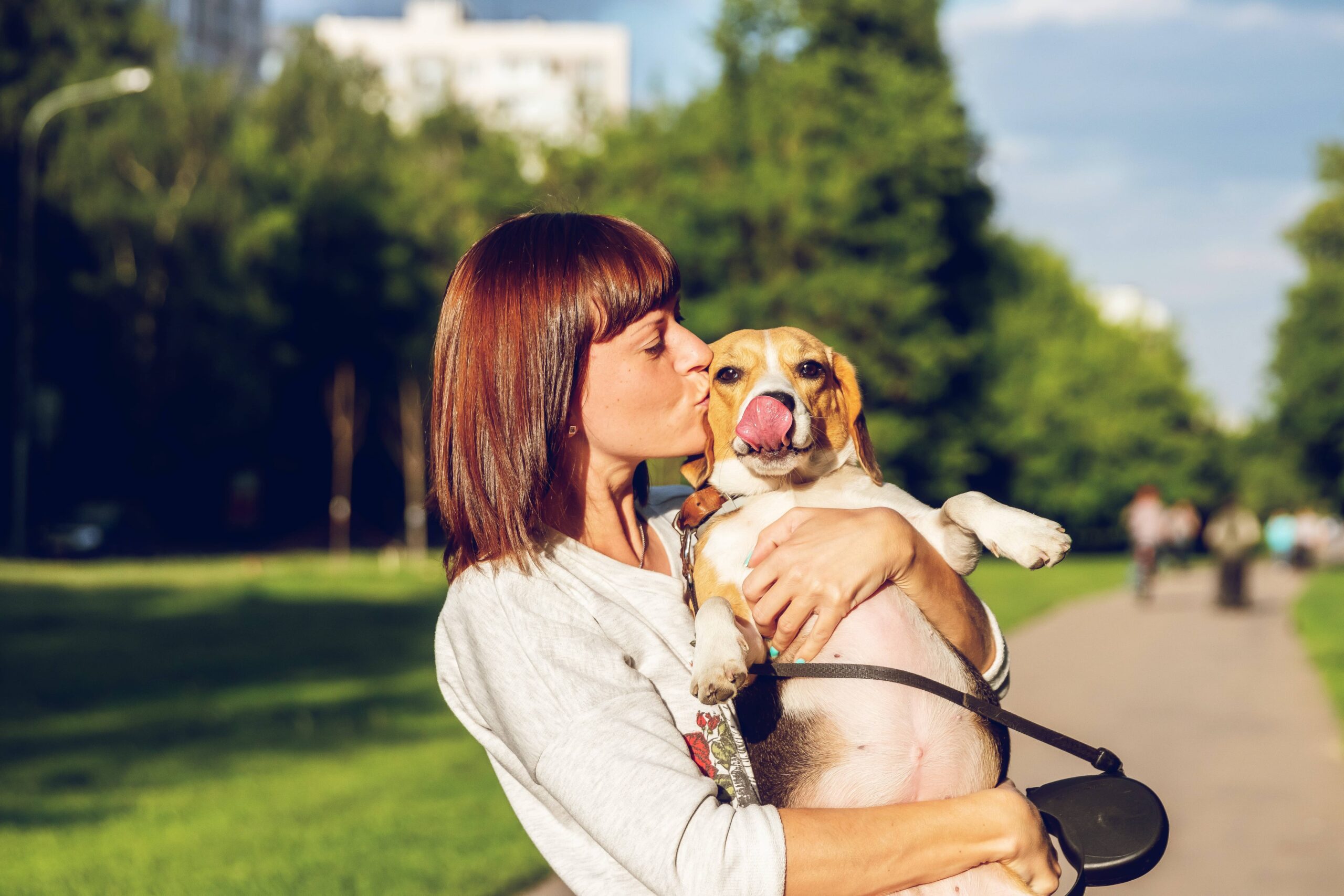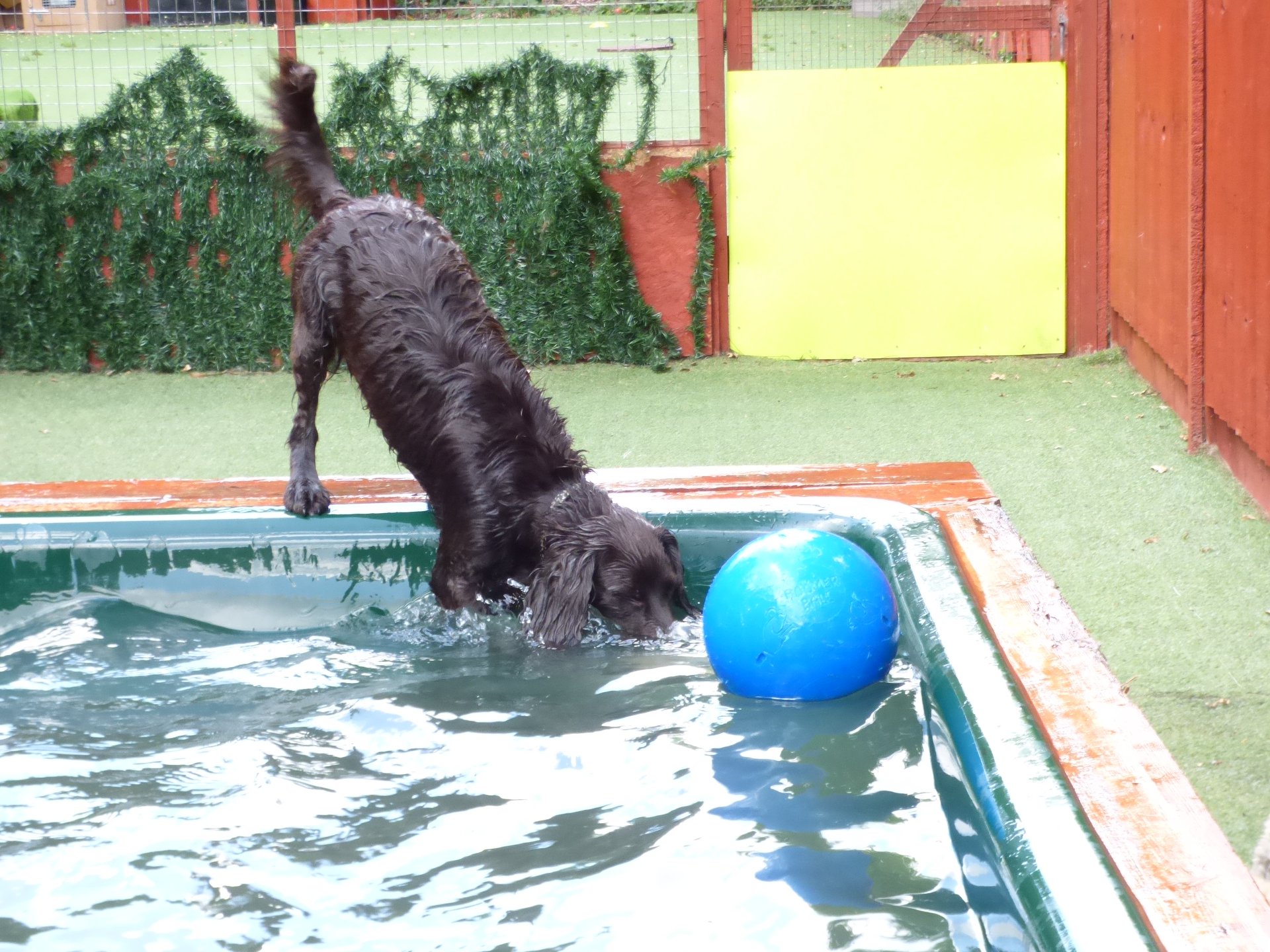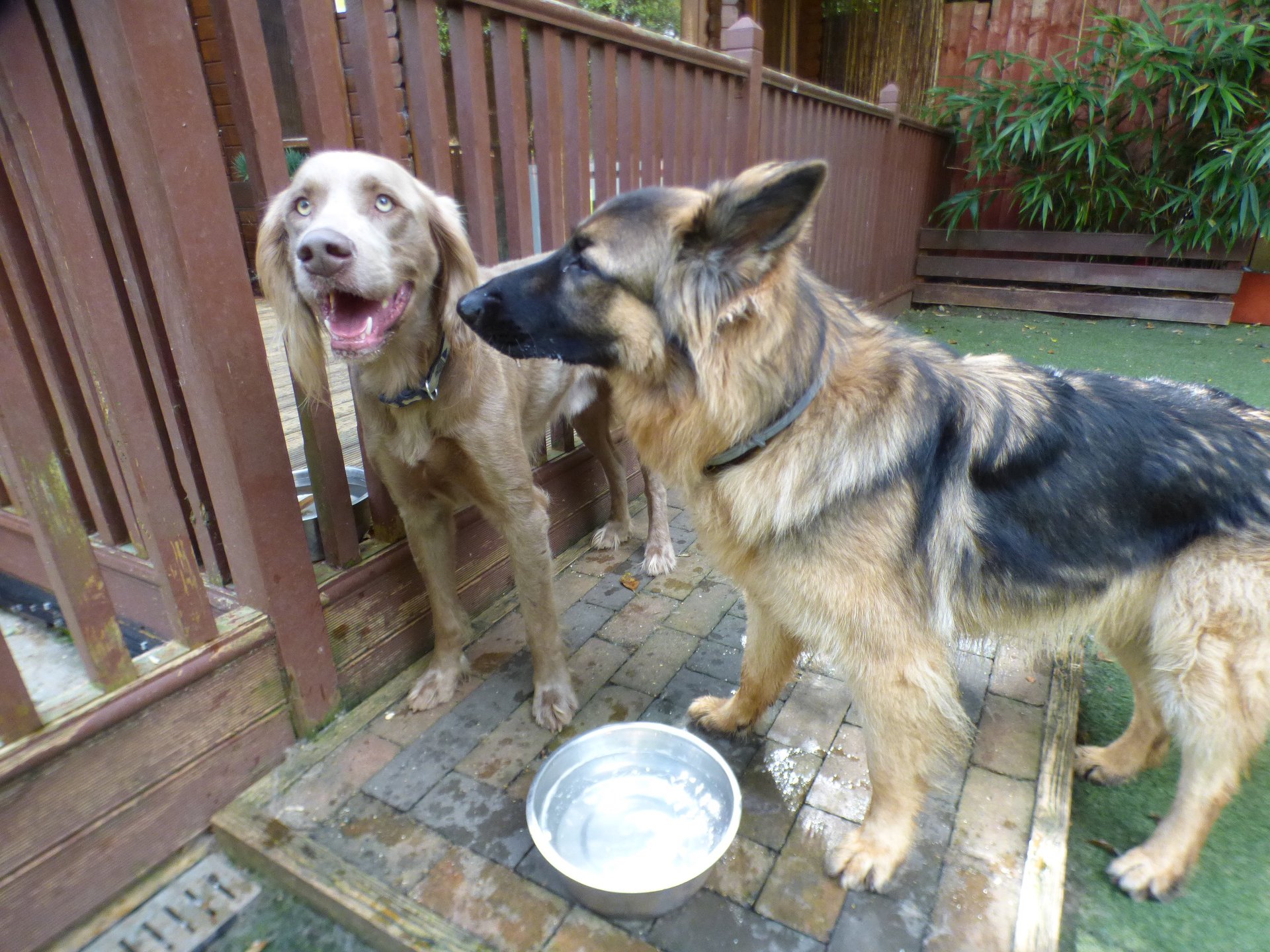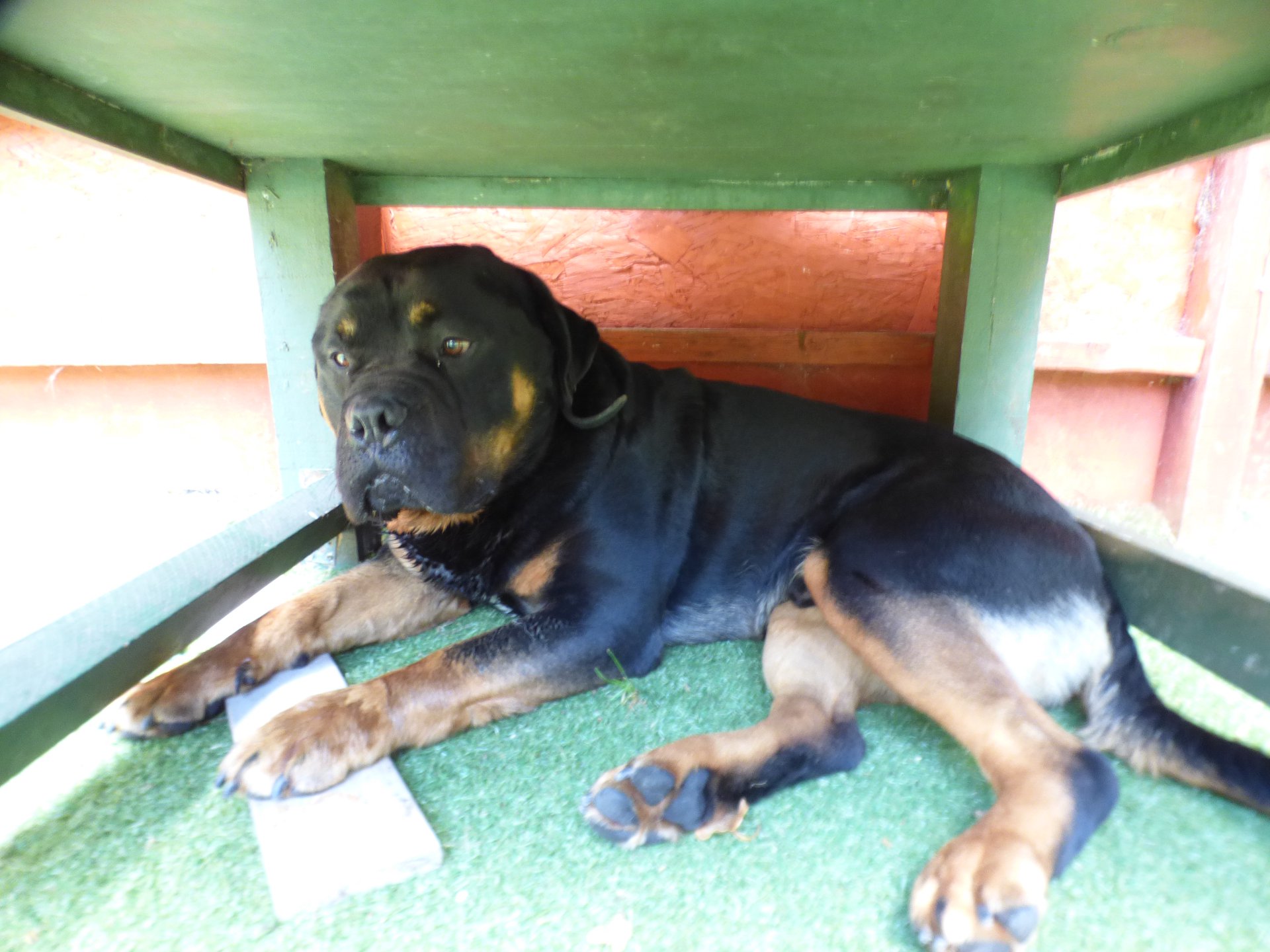We want you to be able to take your dogs everywhere, experience everything , and these Summer months offer some of the absolute best opportunities you’ll ever find! From simple walking to camping, hiking, and playing in the dog park all the way up to advanced agility training, there are so many things a pet owner can’t experience in the winter!
Where there are countless opportunities for fun and bonding together, there are just as many dangers. Though most dogs evolved to be able to tolerate the heat as well as cold, in the end they still came from a species that thrived best in cold climates. As a dog owner, it’s your responsibility to offer the safest environment possible.
Overheating in Dogs
No one wants their beloved pet to suffer from heatstroke, or any other type of hot weather injury. That being said, the most common cause is simple: careless actions by an owner, like leaving the little one in a car or neglecting to give enough water/ provide shade. In most cases, simply paying attention can work wonders!
- Hot weather injuries are the most common danger for dogs during the summer. Being able to recognise the signs & symptoms of these dangers are your first step in preventing them.
NEVER Leave Your Dog in a Hot Car!
This is, sadly, more common than you want to think about. Due to the way heat is absorbed then trapped in your car, the glass itself acting like an insulator, temperatures can rise to dangerous levels ridiculously fast. It doesn’t even need to be scorching outside for the temperatures to become lethal in you car.
Many dogs have suffered because a careless owner left the animal in the vehicle. If you’ve ever driven an older vehicle without air conditioning during the summer, you know this all too well.
The most common cause of heat stroke or hyperthermia is leaving a dog in a car with inadequate ventilation.
-VCA Animal Hospital
Signs of Heat Stroke
The most obvious sign, and usually the first a dog owner picks up on, of heatstroke (or Hyperthermia) is excessive panting. If your dog is panting so hard his/her whole body is shaking, it is probably time to take the furry one indoors to cool off.
- Excessive panting, may cause body to ‘shake’
- Excessive salivating or drooling
- Anxiety, agitation, or restlessness
- Reddening tongue/ gums
- Difficulty breathing
- Vomiting or diarrhoea (which can also lead to dehydration in itself)
How to Treat Heat Stroke in Dogs
Hyperthermia in animals is considered a medical emergency, and reducing your pet’s body temperature safely should be a big priority. You can and should take initial measures to help your pet, but this is a big deal and shouldn’t be ignored. One of the best things you can do here, increasing your dog’s chances of recovery as much as possible, is to get your pet to a vet as soon as you can.
- Get your dog out of the heat into a cool environment.
- Cool (not cold) water can be poured over the dog’s body (head, stomach, armpits & feet). You can also use cool cloths.
- Rubbing alcohol can help dilate the pores in your dog’s feet and help with perspiration.
- Ice can be placed around the anus and mouth.
- IV fluids (cool saline), sedation and oxygen therapy are also commonly used for treatment, but your veterinarian must administer these.
Source: VCA Animal Hospital
In vital situations, when attempting first aid can delay life saving veterinary treatment, Your main priority needs to be getting your dog to the vet IMMEDIATELY. When you arrive in the waiting room, your dog will be assessed based on priority and seen right away; you won’t have to wait in line.
In fat, medical treatment facilities and hospitals never serve patients on a ‘first come, first serve’ basis; they are always triaged based upon needs. The same goes for human hospitals, which is why you might wait in a waiting room for hours while someone else gets seen right away.
Of course, owners will have to use their best judgement here.
Taking Your Dog’s Temperature
The best way to take your dog’s temperature is rectally. Your dog is safe and you can stop cooling when his temperature hits 103.5°F (anything above is considered abnormal). If his temperature is above 104°F, you should take measures to begin cooling. Organ failure and eventual death occurs around 107°F to 109°F (41.2°C to 42.7°C).
Never use ice water or an ice bath to treat an overheated dog. The process needs to be done gradually; this will cause the blood vessels under your dog’s skin to constrict- in fact slowing down the cooling. Never force your dog to drink. If he is overheated but won’t drink, there is a bigger problem and your dog needs to be seen by a veterinarian right away.
Normal: 103.5°F
Needs Attention: 104°F
Organ Failure & Death: 107°F to 109°F
You need to get your pet to a vet right away if he is:
Vomiting or having diarrhoea
Bleeding or bruised
Collapsed or unresponsive
Having seizures
 Caring for Your Dog this Summer
Caring for Your Dog this Summer
Dogs Pant, Humans Sweat
This isn’t 100% true. Dogs do sweat through their paw pads, but only to a limited degree. Unlike us humans, the vast majority of a dog’s heat exchange, or perspiration, happens through panting. Though even this isn’t exactly true for certain hairless breeds, most of them lack sweat glands on their bodies.
After all, what is the use of sweating if it will just get absorbed into all your fur? It would be a bit counter-productive to some of a dog’s natural cooling mechanisms, and I will explain why.
Coats Help Cool, Too (Think Twice Before Shaving).
It’s hard to believe. When most people think of more layers of clothing, coats, or in this case fur, they think of warmth. It only seems like common sense.
Unfortunately for thousands of double coated breads around the world, this isn’t the case at all. In fact, the complete opposite is usually true. A double coated breed evolved through thousands of generations of evolution, from the first wolves, to both tolerate the cold well and handle the heat.
A ‘double coat’, or 2-layer coat consisting of longer ‘guard hairs’ (topcoat) and denser undercoat is meant to serve several functions. Remember, the topcoat of ‘guard hairs’ doesn’t shed- important later on.They are listed in neat little bullet points for you.
- Protect against insects
- Protect against harmful rays from the sun
- Help keep a dog warm during winter months
- Often offer water resistant protection (very useful in cold climates when water tends to freeze)
- Trap cool air close to skin during hot weather
When you cut a double coated breed, or shave him, you are cutting the top guard hairs before you hit the undercoat. These guard hairs aren’t meant to be cut, and don’t shed. When they are removed, the dog’s ability to cool himself successfully is damaged, on top of the other protections those guard hairs provide. If that isn’t bad enough, the two layers might not grow proportionally again.
However, without this insulating layer, dogs are susceptible to heat stroke. This is why you should never shave a double-coated breed. It can result in improper re-growth and the possibility of damage, clogging, and the loss of weather protection.
-American Kennel Club
- So why isn’t sweating a good method of cooling for dogs? Simple! The sweat wouldn’t be able to evaporate, while rendering the water resistant properties of your pet’s coat useless.
- Technically, your dog does have ‘Apocrine sweat glands’, a type of secretion gland, all over his or her body. But the main function of apocrine glands is to release pheromones for other dogs to pick up with their insanely powerful sense of smell, sort of acting like markers or signifiers.
Brush, Don’t Shave
It’s usually much better to brush your dog thoroughly, getting out all that loose fur. An ‘Undercoat Rake’ is one of the best tools you can use. There is also another method professional groomers use for show dogs called ‘hand stripping’, involving pulling or plucking dead hairs. While the hand stripping method is very thorough, it can be uncomfortable for the dog so is usually only used in select situations.
Make Sure Water is Available!
Remember the bit about ‘panting’, not ‘sweating’ above? When dogs pant, they evaporate moisture. This actually does several things for them, but mainly helps cool them. But, like we need enough water in our bodies (or we wouldn’t be able to sweat properly), they need the same.
If your dog isn’t getting enough water, he or she can’t regulate (his) body temperature properly. The same thing can happen to a dehydrated human. If your dog can’t control his body temperature, he will begin to overheat. This can cause many problems besides heatstroke, but that is the main outcome we want to avoid.
- The point here is: Always make sure your dog has enough fresh, cool water! Purchasing a child’s wading pool for a few dollars at your local store is a great way to do this!
- Bring water bottles with you on trips or hikes.
- Look for a waterproof rubber or cloth travel pet water bowl at your local pet store.
- If you are worried about hydration, talk to your veterinarian about trying a ‘wet dog food’.
Shade is Important, Too.
Shade provides an escape from direct sunlight, and is often several degrees cooler. Try to be sure and provide a tree or shaded area outside for your pup!
A Note on Swimming
Though some, like Labrador Retrievers or Newfoundlands, can easily out swim the fastest olympian on earth, not all dog breeds are good swimmers. Some shouldn’t be allowed to enter anything but shallow water at all, and they should always be supervised.
Many breeds with shorter noses, stubby legs or large trunks aren’t good swimmers. For example, Pugs, Bulldogs, Basset Hounds, Boxers, Dachshunds, and many toy breeds don’t swim well and should wear life jackets (which are available for dogs!) when in the water.
Conclusion
We’ve covered a lot here in this article, all very important. Though there are many great activities summer offers, much of the above centres around not only recognising and avoiding hot weather injuries, but what to do if your dog is experiencing one. You’ll find a quick and easy summary of the points made here below!
Know the Signs of Overheating
The first step in preventing heat injuries in dogs is being able to recognise and understand the signs.
Don’t Shave a Double Coated Breed; Brush
Shaving a double coated dog breed doesn’t help prevent heat injuries at all. In fact, in almost every situation, it makes your dog more susceptible to overheating.
Shade, Rest and Water are all Important.
Dogs are more prone to dehydration in hot weather, which in turn causes problems with panting (among other issues). A dog needs to be able to pant in order to regulate body temperature.
Sources Cited
Burke, Anne. (2019, April 18). Do Dogs Sweat? Retrieved from https://www.akc.org/expert-advice/health/do-dogs-sweat/
Ward, Ernest, DVM. (2019). Heat Stroke in Dogs. Retrieved from https://vcahospitals.com/know-your-pet/heat-stroke-in-dogs
Want to find out more about dogs of all breeds? Then check out our blog, or how about this post about Jack Russell Terriers?



 Caring for Your Dog this Summer
Caring for Your Dog this Summer



Leave A Comment